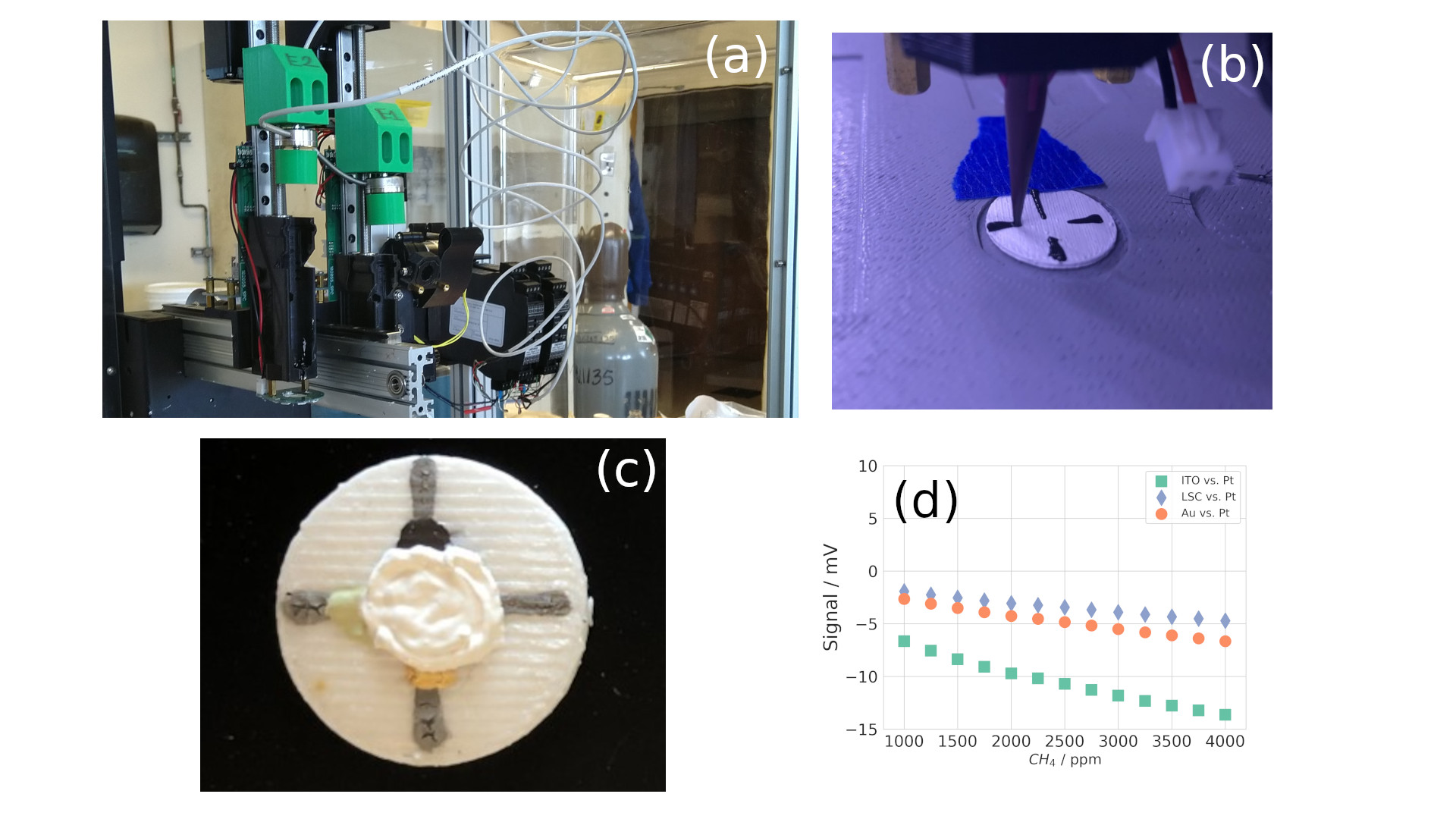Abstract
Additive manufacturing (AM) of ceramic materials offers a promising route to manufacturing high temperature electrochemical devices at small prototyping scales where mass production techniques have excessively high tooling setup cost and time.1 AM also enables the production of components with customizable geometries unavailable to traditional techniques. Mixed Potential Electrochemical Sensors (MPES) are an attractive technology for environmental monitoring applications due to their robustness, low cost, and tunable selectivity.2 MPES devices consist of two or more dissimilar material electrodes in a solid-state electrolyte where the mixed potential difference between the electrodes is used as a sensing parameter. Previously, we have demonstrated the capability to print two-electrode MPES devices on laminated yttria stabilized zirconia (YSZ) substrates and their sensitivity to NOx and NH3.3 We are currently pursuing the development of MPES systems for environmental monitoring of natural gas emissions from pipeline infrastructure. The system will include MPES devices manufactured by additive manufacturing which interface with wireless data acquisition hardware to perform remote sensing. We have used AM to evaluate a wide range of materials and geometries for optimization of sensitivity, selectivity, and stability.
Material extrusion with a multi-print-head Hyrel System 30M syringe printer (Figure 1a) was used to deposit the YSZ substrate material, YSZ porous electrolyte, and electrodes consisting of Au, Pt, La0.87Sr0.13CrO3 (LSC), and Indium Tin Oxide (ITO). YSZ, ITO, and LSC pastes were formulated by mixing powders into resins. A UV-curable resin was used for the printing of YSZ substrates under continuous 365 nm illumination. Pt and Au inks were also extruded from a syringe onto the substrate (Figure 1b) and the final 4-electrode device is shown in Figure 1c. Parameters we optimized included paste solids loading, addition of powder dispersants, the incident power of the UV-curing process. The sensor response to CH4, simulated natural gas, NH3 and H2 were evaluated for sensitivity and selectivity in single gas and binary mixtures at temperatures of 450-600oC (Figure 1d) .
Acknowledgments:
This project was supported by US Department of Energy Office of Fossil Energy through award DE-FE0031864.
References
(1) Travitzky, N.; Bonet, A.; Dermeik, B.; Fey, T.; Filbert-Demut, I.; Schlier, L.; Schlordt, T.; Greil, P. Adv. Eng. Mater. 2014, 16 (6), 729–754.
(2) Garzon, F. H.; Mukundan, R.; Brosha, E. L. Solid State Ionics 2000, 136–137, 633–638.
(3) Tsui, L.; Benavidez, A.; Evans, L.; Garzon, F. H. Prog. Addit. Manuf. 2018, 4, 13-21.
Figure 1. (a) The Hyrel System 30M syringe dispense printer with two UV assisted dispensing heads. (b) Extrusion of Pt ink from a syringe printer onto partially sintered YSZ substrate. (c) Photograph of a completed multi-electrode MPES device. (d) Sensor response to 1000-4000 ppm CH4 in air at 550oC.

Figure 1
